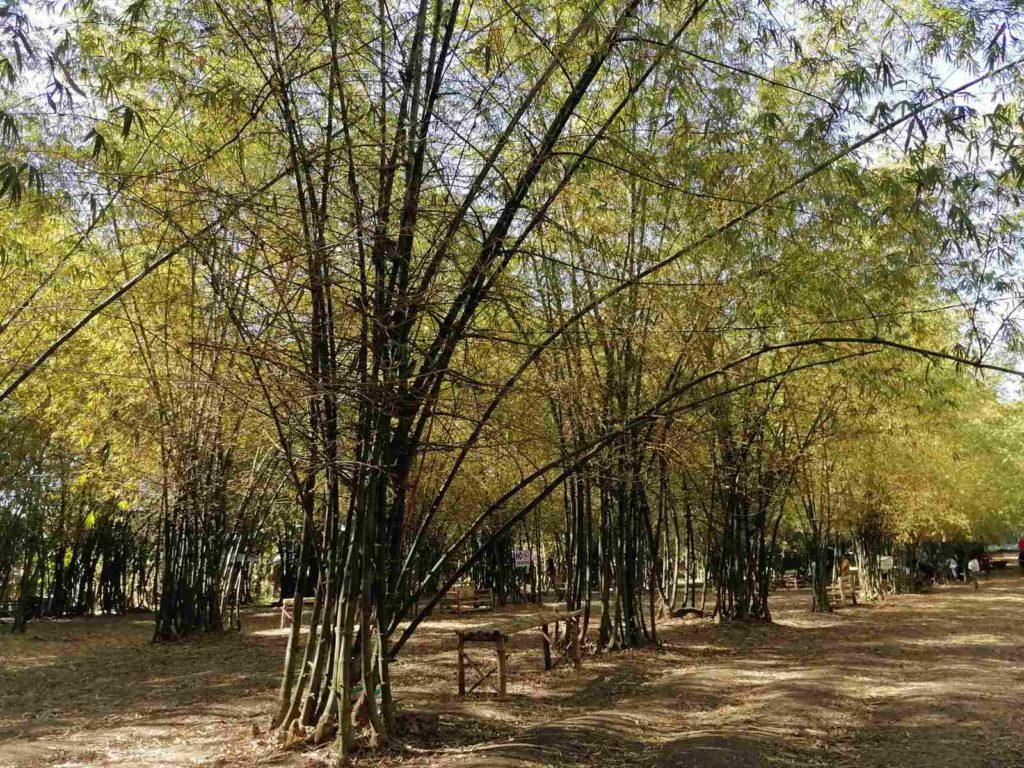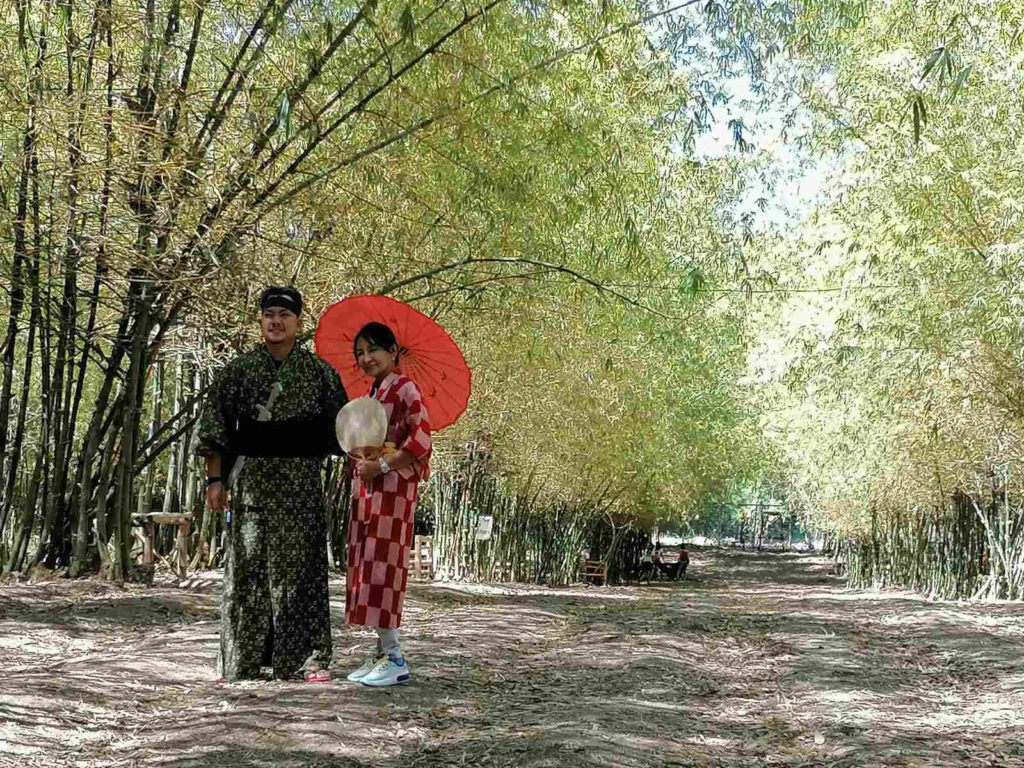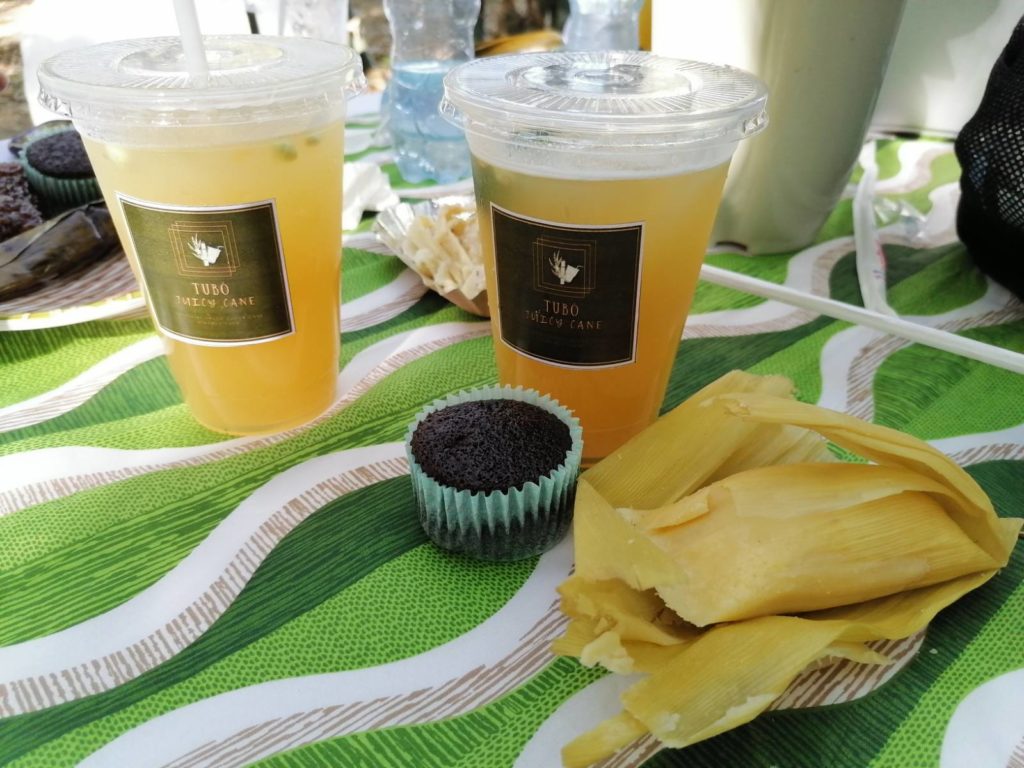
Badges of bamboo planted within the 2.3-hectare Bamboo Forest in Barangay Luy-a, Medellin | CDN Digital Photo by Morexette Marie B. Erram
MEDELLIN, Cebu – Around six years ago, farmers and planters belonging to the Bogo-Medellin Milling Company, Inc. (Bomedco) planted bamboos to help the nearby sugarcane and banana plantations.
The first badges of bamboo cultivated in Barangay Luy-a in Medellin town of north Cebu were harvested specifically to prop up bananas.
But according to Jose Mari Miranda, the current president of the Bogo-Medellin Sugarcane Planters Association, they came up with the idea to turn it into a hangout when they noticed locals dropping by and having their pictures taken with the bamboos for their background.
“At first, we never expected and planned to have it as a tourist spot,” said Miranda in Cebuano.
“But we observed that people really come here for the bamboos… and when we started asking them, they said they found these beautiful. Like they are in a forest,” he added.
Spotting an opportunity, Miranda said they decided to plant more.
And they did so.
Fast forward to several years later, what started out as an ordinary parcel of land planted with bamboo is now one of the most popular tourist attractions in northern Cebu.
At least 200 badges of fully-grown bamboo can now be found in the 2.3-hectare land owned by Miranda in Barangay Luy-a. The property was eventually named Medellin’s Bamboo Forest.
Last February 25, Miranda, together with the local government officials of Medellin town including Mayor Benjun Mondigo, led the ceremonial launching of Medellin’s Bamboo Forest.
Cebu Gov. Gwendolyn Garcia and representatives from the Capitol and the Department of Tourism in Central Visayas (DOT-7) were also present to help promote the province’s newest destination.

Cebu Provincial Board Member Red Duterte (left) with Governor Gwendolyn Garcia (right) in traditional Japanese costume during the ceremonial launch of Medellin’s Bamboo Forest last February 25, 2021. | CDN Digital Photo by Morexette Marie B. Erram
When visiting Medellin, one cannot miss its famed Bamboo Forest.
From the Curva-Bangon-Medellin highway that cuts across hectares of sugarcane fields, clumps of bamboos towering over sugarcanes can be visibly seen on the horizon.
Admission fee, regardless of age, is P20.
However, due to prevailing minimum health standards, Miranda said they decided to cap the maximum number of guests to 300 per day.
The bamboo forest starts accepting guests at 8 a.m. and closes at 8 p.m. on weekdays. On weekends, they often extend their operating hours up to 10 p.m.
Medellin is a second-class municipality located approximately 117 kilometers north of Cebu City. With the presence of a vast sugarcane fields, this town has also earned its moniker as the ‘Sugar Bowl of Cebu.’
Bomedco, one of the country’s oldest incorporated companies and presently owns one of Cebu’s largest sugarcane milling plant, is also a roughly 10-minute ride away from Medellin’s Bamboo Forest.
During a quick trip to the Bamboo Forest, one can also experience a semblance of the life of farmers planting sugarcane for a living. Here, old tractors used in harvesting sugarcane and large kawa for cooking are put on display.
Local vendors also sell delicacies such as pintos na mais, a Filipino version of sweetcorn tamales, and fresh sugarcane juice.

Tubo juice or juice extracted from fresh sugarcane are sold in Medellin’s Bamboo Forest | CDN Digital Photo by Morexette Marie Erram
Miranda said they are glad that the Bamboo Forest placed Medellin once again on the tourist map. It also spawned livelihood opportunities for locals.
“All in all, we are helping everyone and the economy to recover from the pandemic,” he said.
RELATED STORY: Bamboo forest gets transformation, visitors told to keep the place clean and healthy
/ dcb

